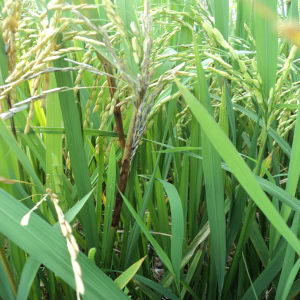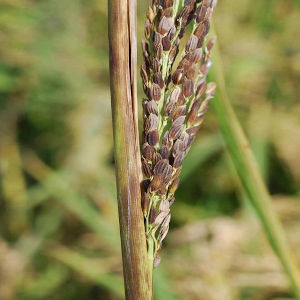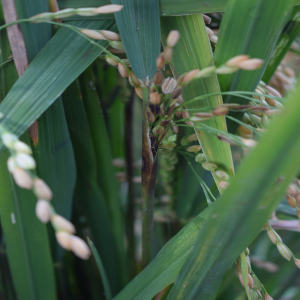- සි
- த

- Address : Bathalagoda, Ibbagamuwa, Sri Lanka
- E- Mail : rrdi@doa.gov.lk
- Telephone : +94 372 258561
- Fax : +94 372 259881
Rice In Sri Lanka - Rice Diseases
Sheath Rot
Causative agent
Fungus, Sarocladium oryzae.
affects most prevailing rice varieties.
usually minor, affecting scattered tillers in a field.
Occasionally, larger areas of a field may have significant damage.
Plant parts and life stages affected
Uppermost leaf sheaths that enclose the young panicle during the boot stage
Symptoms
Lesions are oblong or irregular oval spots with gray or light-brown centers and a dark reddish-brown, diffuse margin, (a typical irregular target pattern).
Usually expressed as a reddish-brown discoloration of the flag-leaf sheath.
Early or severe infections affect the panicle causing the panicle to emerge partially. The un-emerged portion of the panicle rots, turning florets to red-brown – dark brown.
Grains from damaged panicles are discolored reddish-brown to dark brown and may not fill.
A powdery white growth consisting of spores and hyphae of the pathogen may be observed on the adaxial surface of affected sheaths.





Conditions that favour the disease
(During the period from flowering to fruiting)
Environmental temperatures within 20-28 OC
High humidity
Excessive use of nitrogen fertilizer
Disease Management
Within the crop season
Application of urea in recommended dosages or application of urea based on leaf colour chart.
If the crop is infected, following management options should be applied for the next season
Application of organic fertilizer to improve soil conditions
Use of certified seed paddy free from the disease
Addition of burnt paddy husk (253 kg per acre) to the soil during land preparation.
Abstain addition of straw infected with disease
Management of insect populations (Sheath mite)
